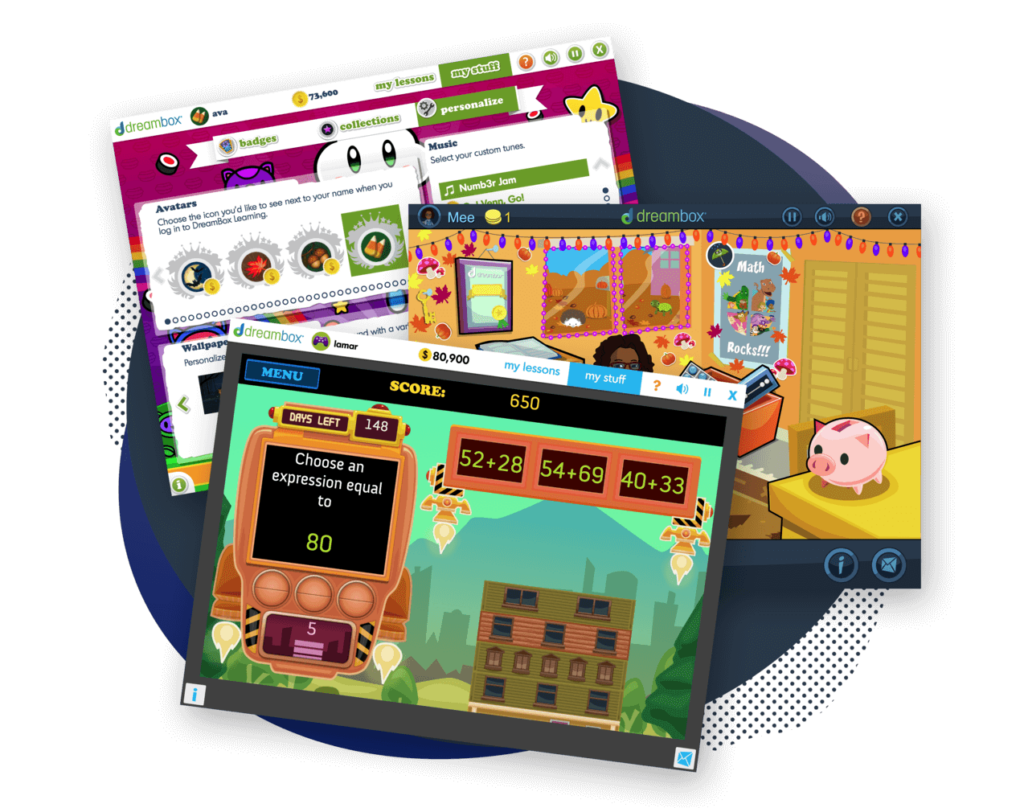What is Kinesthetic Learning?
Going hands-on can give you a leg up on learning.

Author
Jill Padfield
Published:
Oct 2024
Key takeaways
- Get them up and moving – Kinesthetic learning is all about a hands-on approach to learning that benefits those kids who just have to move.
- It’s not just for the active kids – All students can benefit from kinesthetic activities.
- Let your creativity shine – Kinesthetic activities are a great opportunity for you to add some creative flair to your review sessions.
While the notion of specific learning styles, like visual or auditory learning, has fallen out of fashion, appealing to a wide array of interests and diversifying how you go about teaching and reviewing material are good ideas.
Kinesthetic learning specifically refers to teaching in a way that gets learners active and moving. This kind of learning can range from simple manipulatives and toys to full-fledged activities that get kids running, jumping, or even dancing as they practice skills.
What is a kinesthetic learner?
Traditionally, a kinesthetic learner is someone who is deeply in tune with their body. They respond best to simply doing something rather than listening to an explanation or watching someone do it. These kinds of learners are often drawn to sports or other physical activities, but that is not always the case. Of course, all kids benefit from a hands-on approach, but those who identify as kinesthetic are particularly drawn to this style of learning.
Table of contents
Access more math practice with DreamBox
Turn math into playtime with DreamBox Math
DREAMBOX MATH
Get started for FREE today!

10 characteristics of kinesthetic learners
- They are easily bored with seatwork. While plenty of students would rather not stay seated for too long, kinesthetic learners struggle much more than their peers to stay still.
- They are athletic and active. Because of their love for moving, these learners tend to gravitate towards sports, dance, or theater.
- Interactions include Wild gesturing and animated speaking. If your learner loves to speak with their hands or if they generally move around a lot while speaking, they may be more kinesthetic.
- They ask for the hands-on approach. If you are trying to explain how something works, and your learner just wants to try doing it and learn from the mistakes they will likely make, they are showing signs of kinesthetic learning.
- They love experimentation and creativity. Kinesthetic learners sometimes like to experiment with new approaches or like to be creative in other ways, too.
- Field trips are genuinely exciting. If you give your child a chance to step out of the house or the classroom, and they are especially enthusiastic about the change in scenery, they could be kinesthetic.
- They are all about participation. These learners love to be involved as a way to alleviate boredom or simply to give them a reason to get out of their chair.
- Building and creating are very appealing. Either with blocks, LEGOs or other materials, kinesthetic learners like to build things. You may also see this with paints or other tactile creativity tools.
- New things are exciting. Especially with new experiences, kinesthetic learners sometimes literally jump at the opportunity to do something fresh and novel.
- Things “click” when moving around. If you’ve noticed that your learner picks up on skills when they are working hands-on or moving around more, that is a clear sign they are a kinesthetic learner.
What are the benefits of kinesthetic learning?
While more recent studies show that learning styles are not necessarily strictly defined for individuals, taking a kinesthetic approach to a lesson or a review session still has plenty of benefits for all sorts of learners. This means that kinesthetic learning can be great for all students, not just a select few.
It’s fun for all involved
A chance to think creatively and move around can be an exciting break from more traditional seatwork. And while not all topics and skills can be easily addressed with kinesthetic activities, regular opportunities to get up and active can be a lot of fun to plan and participate in.
Fun and fitness meet facts
Aside from the fun that comes with moving around, you can also feel good about using these kinds of opportunities as a chance to work in a work out in your lessons. With childhood obesity still presenting a considerable problem across the country, any chance to get active is a great way to burn calories and promote a healthy, active lifestyle.
Variety chases away boredom
Even the most dedicated student can get a little tired of the same kind of assignments and activities day after day. Adding a variety of activities to your study sessions will help keep learners engaged and attentive, and kinesthetic exercises are a great way to break up some monotony.
Remove and redirect distracting behavior
Kinesthetic learners can sometimes be a little distracted in their quest for movement. A tapping pencil here or a restless twitch there can irk other learners, so a quick kinesthetic activity can help get some of that energy out to make seat work a little more peaceful and effective.
What types of math activities can I do with kinesthetic learners?
Kinesthetic learning is great, but you may be wondering how to best implement more hands-on elements into math lessons specifically. Fortunately, with a little planning and preparation, you’ll find that there are plenty of fun and creative ways to get your learners flexing their minds and their muscles.
1. Hopscotch and other jumping games
The playground classic hopscotch can be modified to teach basic arithmetic. Rather than simply hopping from one space to another, players might need to hop to specific combinations of numbers to get specific sums in order to score points.
2. Use manipulatives
If you are working on any basic math principles, manipulatives might be a great help with getting your child to visualize the math while keeping their hands busy. Any collection of small objects can be used to teach basic arithmetic. A handful of Cheerios or LEGOs can be added, subtracted, multiplied, and divided.
If you are working on geometry, building blocks, peg and rubber band boards, and many other manipulatives exist to help kids learn how different shapes relate to one another.
3. Add math to sports
Scoring in sports already requires a little bit of math, but modifying the scoring systems can make the math as demanding as you want it to be. Instead of each basket being worth one or two points apiece, maybe each subsequence basket is worth the previous point value multiplied by two. With a little imagination, you can work all sorts of math principles into your child’s favorite sport.
4. Target practice
If you happen to have some Nerf guns handy or even just some paper balls, you can set up a shooting gallery with lots of different numbers. As you call out different math problems, players can race around to shoot or knock over targets labeled with the corresponding number. Just be careful when playing like this in the house.
5. Chalk exercises and practice
Sometimes, just taking the math practice outside and onto the sidewalk is enough to get those kinesthetic learners engaged. You can write out some problems in advance or get your learner even move involved by asking them to help.
6. Scavenger hunts
This one will take a little extra time to plan, but it’s a fun and rewarding way to put your child to the test with their math and problem-solving skills. You can devise a scavenger hunt, where the numerical answers to math problems correspond with words or letters. When your learner gets a few problems correct, a clue to finding a hidden location in the house or in the yard will be revealed. Make sure you have a nice reward ready for when they crack the codes and make it to the end of the hunt.
7. Scoops and measures
If you are trying to work with fractions, simulating making measurements in a laboratory or a kitchen can be a fun way to appeal to your child’s imagination and need to get their hands dirty. Prepare all kinds of measuring cups and scales along with an assortment of substances to measure and mix together. You and your learner can pretend to be making a cake or even a magical potion. Just keep the materials you use nice and kid-friendly.
8. Number line races
Start by drawing out a giant number line. You might do this in chalk on a sidewalk or with masking tape in a hallway. Number this line up to 100 and get ready to have your kid zooming back and forth along this line. Have them stand at the zero and read off quick math problems. As soon as they have the sum or product figured out, they need to race as quickly to that spot on the number line as they can. You can really get their heart pounding by quickly adding or subtracting from the numbers as they run.
FAQs about kinesthetic learners
While visual learners prefer to watch demonstrations of a skill in order to learn it, kinesthetic learners want to get right into practicing the skill so they can learn as they do.
The classical impression was that there are visual, auditory, and kinesthetic learners. However, recent studies have disproved the notion that appealing to learning styles and preferences improve comprehension. Instead, studies show that you should seek a variety of teaching methods to keep things fresh and interesting.
Teachers often try to appeal to all kinds of learning and grant students opportunities to learn in ways they prefer. While not every lesson can get every student up and out of their seats, teachers will add kinesthetic components when possible. Auditory lessons are often paired with visuals and demonstrations to appeal to those learning styles as well.
Differentiated learning is when lessons and activities are customized to the specialized needs of individual students. Since every person is a little different and will respond to challenges and tasks in a wide variety of ways, learning needs to take many forms.
Take at home math practice to the next level
Empowering parents and educators to make math practice more impactful. Plus, your kids will love it.


